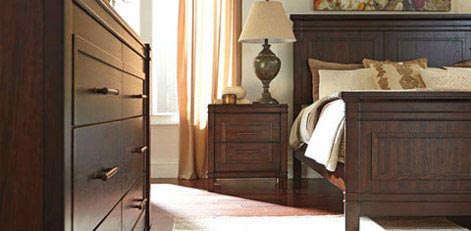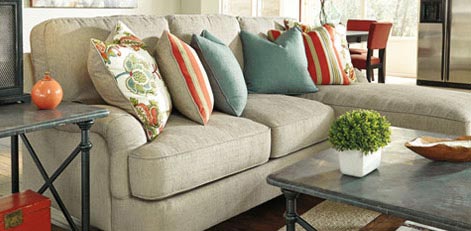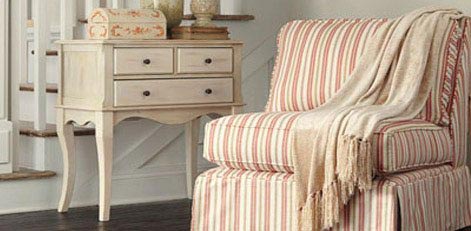Planning to upgrade to a California king bed and wondering how much space you'll need? This guide is for you. Often chosen for its luxurious length, the California King, measuring 72 X 84 inches, requires careful consideration of room size to ensure comfort and functionality.
Ideally, your room should be at least 150 square feet to accommodate this grand bed. Today, we’ll take you through the key factors to consider when planning your bedroom layout, including ease of circulation, view, and privacy. This way, you can create a sanctuary that's both aesthetically pleasing and comfortable.
California King Bed Dimensions


What Size is a California King Bed?
The first step to knowing the best room size for your Cal king mattress is to understand its exact size. Measuring 72 inches wide and 84 inches long, it is four inches narrower and four inches longer than a standard king-size bed. This makes it the longest bed commonly available in stores.
It provides ample space for a single person and is comfortable for couples who prefer close quarters. However, it may feel a bit narrow for couples who like their own space while sleeping.
At 84 inches long, the California King bed is perfect for taller individuals who often struggle with their feet hanging off the edge in standard beds. It's also a great choice for those who simply enjoy more legroom.
The Ideal Room Size
One of the first steps in designing a room is understanding the concept of scale and proportion. This means considering the size of the room in relation to the furniture and decor pieces you plan to use.
For instance, a large, spacious room may accommodate larger furniture pieces, while a smaller room may require more compact, multi-purpose furniture. Understanding scale and proportion can help ensure that your room feels balanced and cohesive rather than cluttered or sparse.
Small Rooms
The minimum room size for a California king bed is approximately 150 square feet. This allows for the bed, two nightstands, and a decent amount of walking space.
In these small bedrooms, consider using multi-functional furniture, such as a California king storage bed. You can also add a wall-mounted desk. This way, you can utilize the limited space efficiently.
Another option for small rooms is to choose a platform bed with a lower profile. This can create the illusion of more space in the room.
Additionally, consider using light colors and minimalistic decor to make the room feel more open and airy.
Keep in mind that proper circulation is important, so make sure there is enough space to move around the bed comfortably..
Large Rooms
For a more comfortable arrangement, we recommend a room size of 150 to 250 square feet or more. This allows for additional furniture, such as a dresser or a desk, along with adequate space for movement.
In larger bedrooms, you have the luxury of incorporating additional furniture and amenities. Consider adding a seating area with a cozy recliner, a loveseat, ottomans, a vanity table, and even a small reading nook.
You also have the flexibility to create different zones in the room, such as a sleeping area, a reading corner, or a dressing area. These extra features can help create separate zones within the room, allowing for different activities and a more organized space.
While larger rooms provide more flexibility in terms of furniture and layout, it's important to maintain a sense of balance and avoid overcrowding. Consider incorporating additional seating areas, storage solutions, and decorative elements to make the most of the space.
Additional Factors to Consider
Aside from the room size, you also have to consider the layout, design, and accompanying furniture to create a harmonious and functional bedroom space.
Position of the Windows and Doors
The position of the windows and doors is another critical factor in planning a bedroom layout. The placement of these elements affects the circulation of air and natural light in the room, as well as the placement of furniture.
Windows
Windows are the primary source of natural light in the room. Place your bed in a position where it doesn't block the light from the windows. You can also use light curtains or blinds to control the amount of light entering the room.
Doors
The position of the door determines the entry and exit points in the room. Ensure that the door opens fully without hitting any furniture. Also, leave enough space around the door for easy movement.
Functionality of the Room
The functionality of the room is another key factor to consider. A bedroom is not just a place to sleep, it can also serve other purposes.
It can be a study area or a dressing room. Plan your layout according to the functions you want your room to serve.
Sleeping Area
This is the primary function of the bedroom. Ensure that the bed is placed in a comfortable and quiet area of the room. You can also add a nightstand for added convenience.
Study or Work Area
If you plan to use your bedroom as a study area, include a desk and a comfortable chair in your layout. Place the desk near the window for natural light during the day.
Some people also use their bedroom as their home office. If you work from home, incorporating a functional work area in your bedroom can be a great idea.
Dressing Area
If you have enough space, you can create a dressing area with a full-length mirror and a wardrobe or chest. This will help to keep your clothes and accessories organized.
Remember, the key to a successful bedroom layout is to balance functionality and aesthetics. Prioritize your needs and plan your layout accordingly.
Personal Style
Your personal style should be reflected in your bedroom layout. Whether you prefer a minimalist design or a luxurious setting, your bedroom should be a place where you feel comfortable and relaxed.

 @kimberleyharrisoninteriors
@kimberleyharrisoninteriorsMinimalist Design
If you prefer a minimalist design, keep your layout simple and clutter-free. Use only essential furniture pieces and keep the décor to a minimum.
Consider opting for neutral colors and clean lines in your furniture and decor. Use storage solutions, like grey nightstands or brown dressers, to keep your belongings hidden and maintain a clutter-free space.


Luxurious Setting
If you prefer a luxurious setting, you can incorporate more furniture pieces and décor items. Use rich textures and colors to create a warm and inviting atmosphere.
Consider adding plush bedding, decorative pillows, and cozy area rugs to create a sense of opulence. Incorporate elegant lighting fixtures and statement pieces of furniture to elevate the overall look of the room.
Personalize the space with artwork, photographs, or other meaningful objects that reflect your taste and personality. Don't forget to add curtains or blinds that complement the overall style of the room.
Ease of Circulation
One of the most important elements of interior design is creating a space that is not only aesthetically pleasing but also functional. This means ensuring that there is ease of circulation within the space. Here are some key ideas to help you achieve this:
Clear Pathways
Ensure that there are clear and unobstructed pathways in your home. This means that furniture should not block the way, and there should be enough space between pieces for people to move around comfortably. Clear pathways also help to create a sense of spaciousness and order in the room.
Proper Furniture Placement
Once you've determined the size of your room, the next step is to choose and arrange your furniture. Proper furniture placement can make a room look more spacious and inviting.
Proportional Furniture
Make sure to choose furniture that is proportional to the size of your room.
A large, bulky sofa may overpower a small living room, while a tiny coffee table may look out of place in a large, spacious area.
Functional Layout
Arrange your furniture in a way that promotes easy movement. For example, anchor the Cal king bed and nightstands or dressers along the wall to maximize space.
Balance
Balance is key in interior design. Distribute your furniture evenly throughout the room, and try to balance heavy items with lighter ones.
For example, if you have a large, heavy dresser on one side of the room, balance it with a couple of lighter accent chairs or a small desk on the other side.
Use of Mirrors
Mirrors can be a great tool to improve circulation. They not only make a room look larger but also improve the flow of light, making the space feel brighter and more open. Place mirrors strategically to reflect light and to give the illusion of a more expansive space.
Open Floor Plan
An open floor plan can greatly enhance the circulation in your home. It creates a more flexible space and allows for more interaction among family members. However, it's important to define different areas within the open floor plan through the use of rugs, furniture arrangement, and different color schemes.
Privacy
Regardless of whether it's a small apartment or a large mansion, the need for personal space and privacy is universal. Here are some key ideas that can enhance the privacy of your home:
Use of Room Dividers
Room dividers are a simple yet effective solution to create privacy in your home. They are versatile and come in a variety of styles, materials, and designs.
For example, you can opt for a traditional wooden divider for a rustic touch or a sleek glass partition for a modern look. Not only do they offer privacy, but they also help to define spaces and add to the overall aesthetics of your home.
Privacy Screens
Privacy screens are similar to room dividers, but they are typically used outdoors. They are great for creating a private oasis in your backyard or balcony.
From lattice screens to bamboo panels, there are plenty of options available in the market that can add an element of privacy and style to your outdoor space.
Window Treatments
Window treatments such as blinds, curtains, and shades can provide the much-needed privacy, especially in rooms that face the street or have large windows.
They also control the amount of light entering the room and contribute to the overall decor. Choose the right window treatment that complements your interior design and meets your privacy needs.
Soundproofing
Privacy is not just about visual separation; it's also about reducing noise. Soundproofing your walls can help to create a quiet and peaceful environment in your home. This can be particularly beneficial if you live in a busy city or have noisy neighbors.
Landscaping
A well-planned landscape can provide a natural barrier and enhance the privacy of your home. Planting tall trees or shrubs around your property can obstruct the view from the outside, thus creating a sense of seclusion.
Your Comfort is King
When choosing a California king bed, consider the size of your room and how it will fit into the overall design. A larger bed can create a luxurious and inviting atmosphere, but it should still allow for ease of circulation.
Make sure that there is enough space around the bed for comfortable movement. You can further enhance privacy by using curtains or blinds that complement the style of the room. Additionally, consider the height and style of the headboard to add a decorative touch to your bedroom.


















